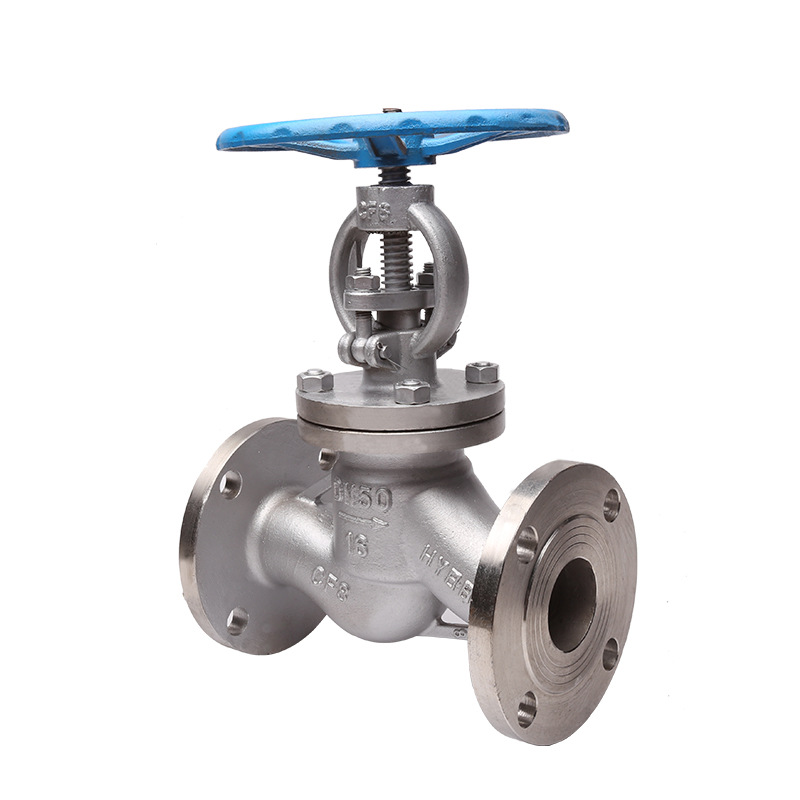When it comes to precisely regulating flow in pipelines and process equipment, few valve designs can match the versatility of flanged globe valves. These robust yet compact valves have become indispensable across countless industrial applications that require throttling capabilities.
From oil/gas and chemical processing to power generation and high-purity manufacturing, flanged globe valves provide exceptional control combined with tight shutoff. Their unique contoured plug design offers advantages over other throttling valve types as well.
If your operations demand precision flow modulation along with reliable isolation, it’s hard to beat the performance of flanged globe valves.
The defining component of a globe valve is the specially contoured throttling plug. As the plug’s profile varies, it edges in and out of the surrounding seat ring. This gradually expands or contracts the flow passage to modulate the volumetric flow rate.
The shape of the plug’s guiding surfaces and seat ring determine flow characteristics. Popular trim styles include:
Stem-guided plugs move perpendicular to the flow path, while beam-guided types pivot instead. The materials and finishing of these precision-machined trim parts are critical.
The flanged globe valve body consists of three chambers separating the inlet, outlet, and bonnet regions. By design, the bonnet area containing the stem, plug, and guiding surfaces is fully isolated from the flow path.
This protects components from erosion and process media exposure. It also allows inline maintenance by removing just the bonnet – no need to disconnect the valve body itself.
Another key advantage of globe valves is their bidirectional sealing capability when closed. With the plug tightly seated, they can prevent flow and withstand pressure from either upstream or downstream directions.
Spiral-wound gaskets, laminated rings, or other reinforced seals create the tight shutoff barrier necessary for this bidirectional sealing. As with other components, the sealing material selection is based on the temperature, pressure, and media properties.
As the name suggests, flanged globe valves feature raised face or ring joint flange connections at the inlet and outlet ports. These bolt directly between mating pipe flanges for installation.
Flanged ends make globe valves fairly easy to insert into new piping runs or remove for service without disconnecting excessive upstream/downstream sections. Common flange facing styles include raised face, flat face, grooved, and RTJ/ring joint types to match piping specs.
Besides flanges, globe valves may also be available with other end styles such as:
To withstand the rigors of industrial service, globe valve bodies are constructed from high-strength metallic materials like:
The body material provides the necessary structural integrity while also offering some chemical compatibility with the process media. Stainless steel flanged globe valves are very common in corrosive environments.
Internal trim components utilize specialized alloys and materials designed to handle specific temperature/pressure/media conditions over long operating cycles.
Thanks to their robust throttling abilities combined with reliable shutoff, flanged globe valves fill critical roles in many sectors, including:
Flanged globe valves can handle liquids, gasses, steam, slurries, and other media with a wide range of pressures and temperatures. They’re available in both standard and project-specific designs per application requirements.
While very versatile, it’s important to understand where the strengths and limitations of flanged globe valves lie:
The contoured plug design excels at gradually metering and throttling flow rates. This makes globe valves ideal for regulation, mixing, process diversion, and other modulating services.
When closed, flanged globe valves provide bidirectional Class VI shutoff to isolate equipment and prevent backflow.
While robust overall, flange globe valve parts are more prone to wear than some other valve types like ball or gate. This makes them less ideal for applications requiring frequent open/close cycling.
The multiple flow path turns and contours in globe valves create more resistance and turbulence compared to ball or gate designs. This results in higher pressure drops, limiting maximum flow capacity for a given valve size.
Whether your process involves throttling chemical feeds, regulating fluid temperature, or any other critical modulating service, a dependable flanged globe valve is essential. When you partner with a proven manufacturer like Xintai Valve, you can count on superior performance and long service life.
Xintai offers an expansive lineup of flanged globe valves engineered to handle virtually any application:
From basic isolating and sampling duties to the most demanding process control, Xintai has the flanged globe valve solution you need. Their commitment to innovative engineering and rigorous quality control results in equipment you can stake your reputation on.
